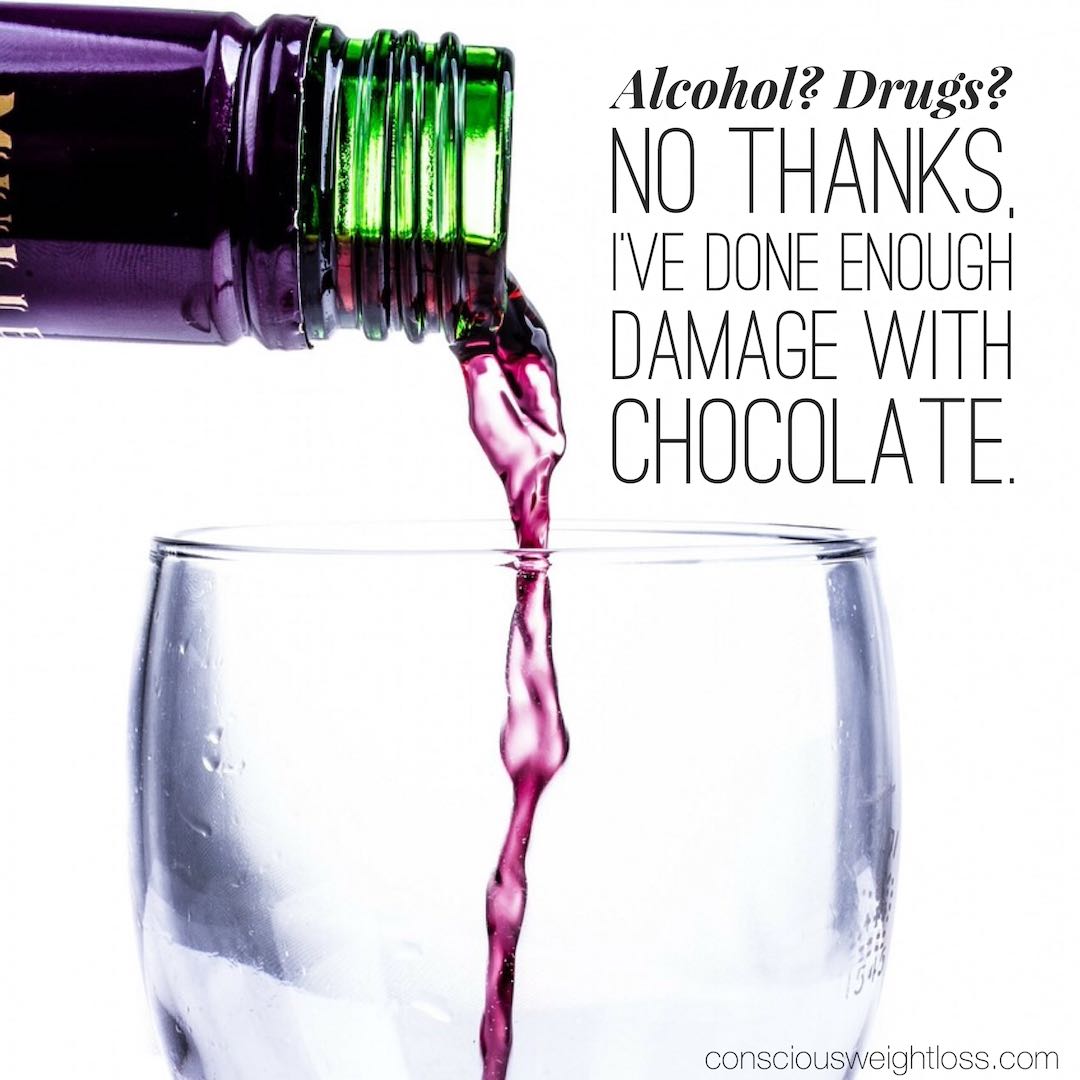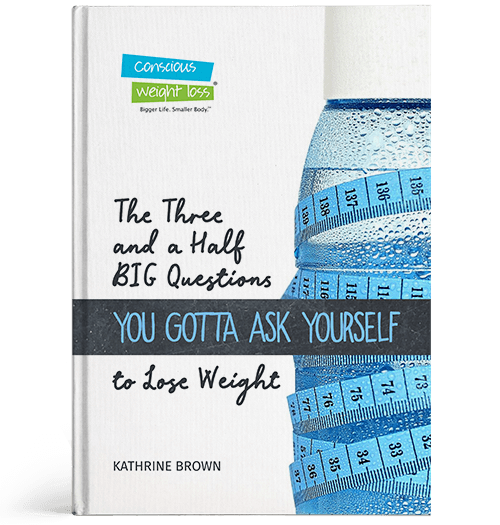
Alcohol? Drugs? No thanks, I’ve done enough damage with chocolate.
Today’s Wisdom Bite about harm reduction acknowledges that our drug of choice differs only by degree. All addictions involve the same brain networks and have some level of stigma and shame for the person struggling. A harm reduction approach is based on the preservation of a person’s dignity and autonomy, while helping to reduce the risks and harm of their behaviours. There’s an overwhelming body of evidence that this ‘compassion-first’ model works. It welcomes the shades of grey that are missing from the ‘good-bad’ framework of abstinence. If food is both your love and your nemesis, harm reduction is also the only way to restore your natural relationship with food.
If abstinence doesn’t feel realistic or sustainable to you, harm reduction is your solution…
See below for an insider’s look at what Wisdom Bites members have further access to
MEMBERS-ONLY CONTENT:
Here’s what you need to know
If abstinence doesn’t feel realistic or sustainable to you, harm reduction is your solution. The reality is, binge eating and food addiction are longstanding and resistant behaviours for those who struggle with them. These behaviours are influenced by a multitude of factors: genetic; environmental; socioeconomic; biological; neurological; psychological; and spiritual. So it’s a huge misconception to think that readiness and abstinence are even necessary to begin addressing the many facets of disordered eating or an active food addiction.
- Avoidance is not a life skill. Rules and restrictions that have you avoiding trigger foods or over-planning situations will halt your developmental learning; these methods can only teach coping mechanisms not life skills. The argument is “It’s easier this way.” Note: the easy path is rarely the growth path. Adherence to a rigid – albeit healthier – set of behaviours often becomes the new dysfunction (the diet and exercise industries are rife with examples of this). Harm reduction offers a safe space for exploration and experimentation as you learn to respond to your needs in a way that can withstand the tests of life.
- You can’t access your bigger life by selling your Soul. Radical changes typically lead to or amplify disordered eating (e.g. cutting out entire food groups). The argument is “It’s a means to an end.” But trying to control your way to weight loss or to freedom from your food obsession will only bring fear to your relationship with food and leave you with conditional outcomes (i.e. once you stop the control, the weight loss and freedom evaporate). The litmus test is simple: would you still eat this way if it didn’t lead to any weight loss or freedom? If not, you’re selling your Soul to get those results. Harm reduction ensures gradual and sustainable outcomes.
- Abstinence by choice is the holy grail. Avoidance and radical changes are hallmarks of abstinence by control, which equates to reluctant compliance. The argument is “Fake it ‘til you make it”…ahem, see selling your Soul above. Abstinence by choice, however, is a form of spiritual honouring. It fosters a cheerful willingness that can only be achieved from the relaxed energy of letting something go (vs. the tension of giving something up). This is what happens when you do your inner work and use harm reduction to dial down your resistance. When resistance is addressed, the disorder or addiction falls away naturally over time.
Most people intuitively know whether or not harm reduction is right for them. If you’re drawn towards this approach, you’re likely more intent on: developing an internal ethic (vs. relying on external accountability); employing critical thinking (vs. a ‘just tell me what to do and I’ll do it’ mentality) and preserving the pleasure food holds for you (vs. becoming food neutral). Interestingly enough, all of these are hallmarks of a natural relationship with food.
Here’s what you can practice
Start by choosing a substance or behaviour that you currently derive some pleasure from – but please, stick to something that is non-threatening to you personally with regard to tipping into a binge or an addiction! For me, this might be Baileys on the rocks or surfing online for tech gadgets. Be sure to choose something you have a desire for, not a distaste for (e.g. cigarettes would not work for me here as I have a strong aversion to them). This is about engaging your dopamine network and its ‘wants’.
Next, place that bottle of Baileys in clear view or place something in your shopping cart…and wait. Notice the appeal of these things each time you walk into the room or revisit your browser. But also notice how readily your brain can switch away from them to focus on other things. There’s probably some accompanying, supportive self-talk as well (e.g. “I enjoy Baileys but I don’t want that right now” or “Cool gadget but I don’t really need it”). This is what a healthy brain response looks, feels and sounds like and it’s important to recognize your brain is functioning well here.
Now imagine replacing those things with your favourite chocolate and consider the contrast. A little bit distracted? A whole lot obsessed? The difference is the salience your brain has assigned to your drug of choice. The message it’s stuck on is “I must have this to survive.” Of course, if you have some and then try to stop, the only message you’ll hear is “More.” This is what an addicted brain reaction looks, feels and sounds like. It’s absolutely nothing to be ashamed of. Remember, your brain was doing just fine with the non-threatening items. The good news is, by practicing with the non-threatening items, you can eventually learn to transfer these skills.
Remember to get your free wallpaper of this Wisdom Bite to help you keep it top of mind.
How did it go for you?
What I love most about harm reduction is the experiential aspect of it. We grow through direct experience, not just theory. Let’s face it, you don’t learn how to ride a bike by just reading a really great book about it. And you don’t master riding that bike by holding yourself to an unrealistic level of perfection. You try. You fall (notice I didn’t say fail). You try again with some course corrections. You fall again from something unexpected. You keep trying and you keep progressing.
Recount one of your falls and the wisdom it led you to and share it in the Members-Only Comments section below.
It’s a powerful thing to let others be witness to your vulnerability and your courage.
Be sure to check back in too, to let us know how it’s going!



Conscious Weight Loss®
New to Conscious Weight Loss? Continue to this next Wisdom Bite
Interested in more? Check out these related Wisdom Bites
Ego and Soul (Members-Only)
Resistance



This Wisdom Bite resonated with me on a few levels. What I found incredibly interesting, upon further reflection, was that my health care professionals (bariatric educators, endocrinologists, GP) promote abstinence/avoidance and encourage perfectionism. Never have they discussed or explored the concept of harm reduction or natural relationships with food. How interesting!
Sadly, this is because they’re just focused on creating an end RESULT & often influenced by the 12-step model of abstinence/avoidance. Most of those health care professionals have no training or experience in helping you develop the SKILLS for change.
This was a powerful wisdom bite for me. Abstinence I am very familiar with and rings of failure fear and shame. Harm reduction feels hopeful and although I have a lot to learn and realize it will take time and growth to live from that space it’s exciting to dream I can do it. Belief and trust in myself that I cam live and breathe that dream – well they will take a little more …. Exciting scary
Yes, abstinence is often coupled with moralistic and punitive language which is inevitably discouraging. Harm reduction taps into that ’ember of hope’ that remains intact within each of us.
I have tried the rigid path so many times, and have paid large amounts of money for elimination diets and restricted eating choices. What I learned was that the fall from these paths was spectacularly bad, leading to months (and even years) of disordered eating. The harm reduction model has worked so well for me in the past, but it feels like less of a “plan” and so I think I struggle to adhere to it. I’d love to consider this more after this post.
I’m so glad you see the connection between that rigidity & disordered eating. You’ll find as you learn to dial the control down, your trust dials up commensurately.
That’s so interesting….as the control dials down the trust dials up. Trust of myself? That would be completely new learning for me!